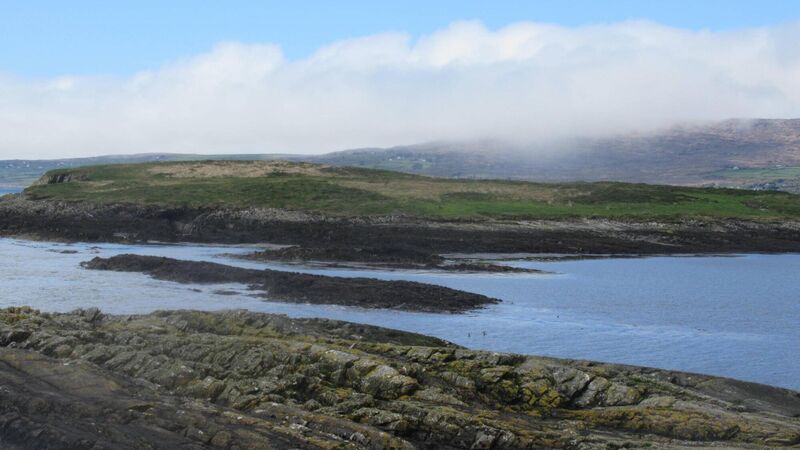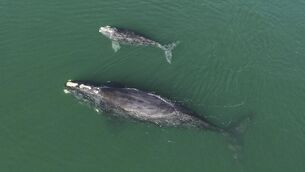Islands of Ireland: Grey seals make the most of the sandy inlets of Cork's Furze Island

Furze Island, Dunmanus Bay, Co Cork. Picture: Dan MacCarthy
Furze island is one of a few of our islands to be named after vegetation when not counting the generic tree or bush islands. Arbutus Island in the lakes of Killarney, Freaghillaun (Heather) Co. Galway, are others. Lough Ree also has a Whin Island by which furze or gorse is known in northern counties.
Furze Island is one of an archipelago of six islands in Dunmanus Bay between the Mizen and Sheep peninsulas, but lying on the Mizen side. Scurvygrass Island, Lusk Island, Cold Island, Horse Island and Carbery Island are the others in increasing size and which sound like the characters from a picaresque novel.
At 15 acres, but only 15m high, Furze is the second largest of the group. In fact, along with Carbery Island, the two dwarf the others. It is about midway along the peninsula between the village of Durrus as the land rises to the west, and the evocative Three Castles Head. It is used today just for grazing animals, and perhaps as an inspiration for an artist, but for precious little else.
No humans call this treeless island home nor ever did as its inhospitable nature disinclines potential dwellers. However, there are plentiful numbers of other mammals: grey seals haul themselves out on the several sandy inlets on the eastern side which is more appealing than the western Carrigveagh rocks would suggest.
In Irish, the island is called Oileán an Aitinn or Island of the Furze or Gorse. The word crops up in many place names including in Co. Waterford at ‘Faill an Aitinn’ or ‘The Furze Cliff’.
Furze must have been much more abundant in previous centuries on the island as coverage is now sparse. The shrub has had a myriad of uses including for use in limekilns; fences; fuel; fodder; manure; farrowing; cleaning chimneys, dyeing and walking sticks and even as a camán.
The supply on Furze Island must have been of significant use to those living in this part of the Mizen Head, though it was hardly in short supply on the mainland either. There was even a verse of an old traditional air that mentions the plant:
The island has seen a number of shipwrecks over the years, mainly in the 19th century. In 1844 the Guiana, sailing from Ichaboe Island in Namibia, and carrying a cargo of guano (seabird excrement) to be used as fertiliser, foundered on the rocks of Furze Island.
The rich supply of the waste was mined to such an extent that a gold rush of sorts developed around the industry in southern Africa and the product became known as ‘white gold’. The destiny of this particular cargo was to lie at the bottom of the sea in Dunmanus Bay. All the crew of the Guiana were saved.
And in 1862 the schooner Angeline from Minatitlan in Mexico carrying a cargo of mahogany bound for Liverpool also met the same fate as the Guiana. Again, all aboard survived.
The reported that: “She came to anchor off Furze Island at 2am, the violence of the gale increasing she parted her cables and was driven on the rocks of Horse Island [adjacent] at 4am. In consequence of her striking heavily aft, Captain Dow concluded there was nothing left but to take to the longboat which he and the crew did, and very shortly afterward she slipped off and went down on six-fathom water.”
The cargo was smashed to pieces on the rocks and according to the Goleen correspondent of this paper, much of the cargo was ‘saved’ by the locals, perhaps to be used in housebuilding or the counter of a bar.
All the islands of the archipelago were once under the ownership of the local 19th-century justice of the peace, Richard Hungerford. When his 600-acre estate was sold at the turn of the 20th century the islands were sold off separately.
- Kayak or small boat from Dunmanus Harbour. No ferry.
- , AT Lucas, Folklore Society of Ireland; , January 30, 1862








